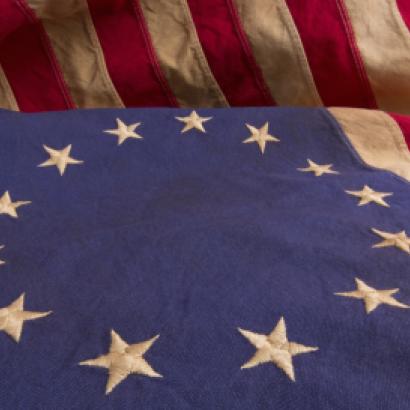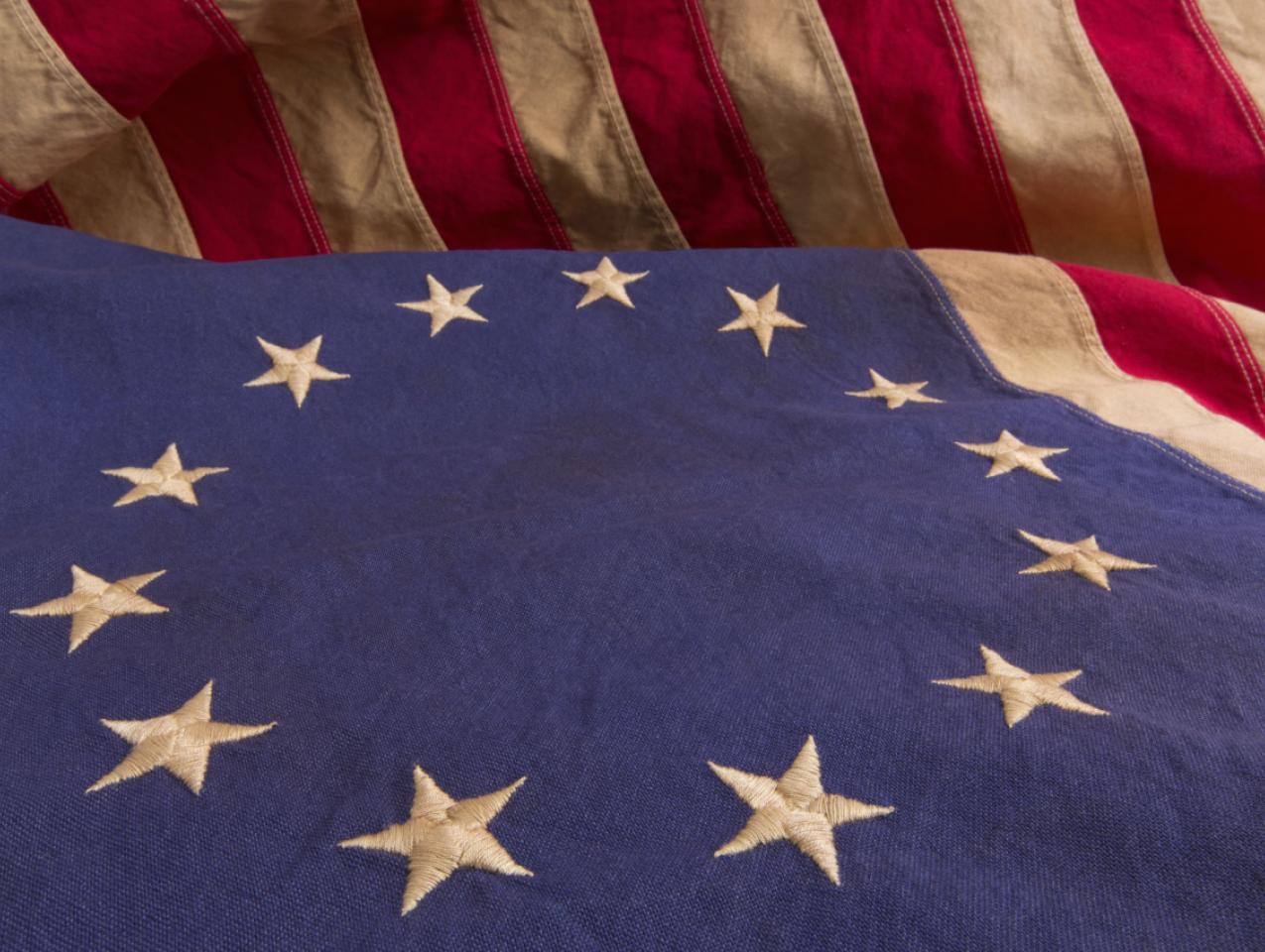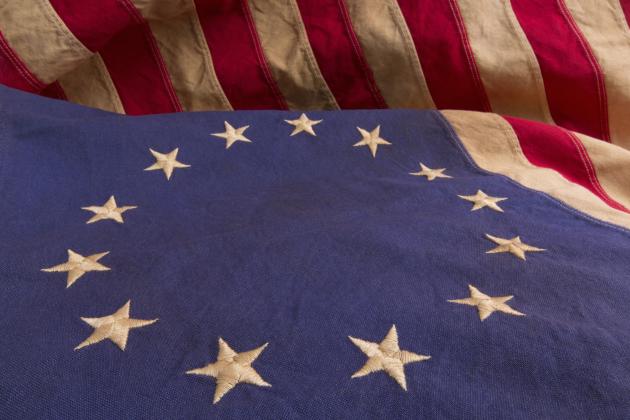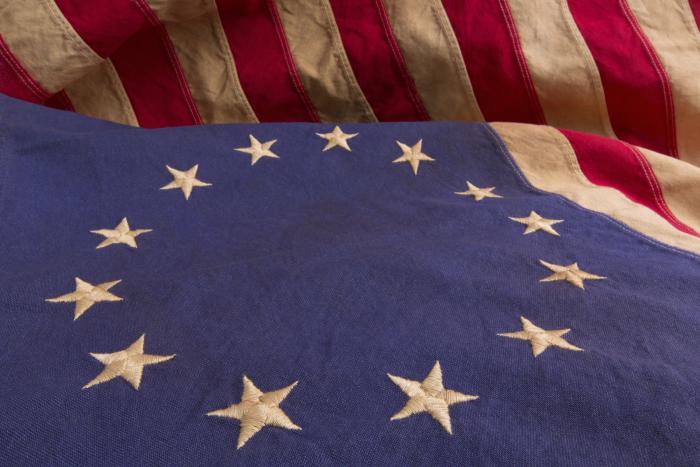Editor’s Note:
This is an excerpt from a longer essay by Mr. Yoo, titled "Socialism vs. the American Constitutional Structure: The Advantages of Decentralization and Federalism." It is published by the Hoover Institution as part of a new initiative, "Socialism and Free-Market Capitalism: The Human Prosperity Project."
American history shows that federalism initially went too far in its protection of states. Slavery made plain the most obvious flaw in the Constitution’s original design – it failed to provide a minimum protection for individual rights against states as well as the federal government. Slavery deprived a specific race, brought to the United States from Africa, of the same rights enjoyed by the majority of Americans. The Constitution gave slave states a political advantage with the rule that slaves counted as 3/5ths for purposes of allocating House seats. The Civil War brought slavery to an end, and the Fourteenth Amendment’s guarantee of privileges and immunities, equal protection, and due process against the states – sought to end the discrimination upon which slavery was built.
It would take, however, another century for the Civil Rights Movement to force the United States to live up to the promise of the Reconstruction Amendments. Eventually, Congress would pass the 1964 Civil Rights Act, which prohibited racial discrimination in employment and education, and the 1965 Voting Rights Act, which barred racial discrimination in elections, to end the era of Jim Crow. These civil rights acts greatly extended the reach of federal power at the expense of the states. States could no longer use their police powers to engage in discrimination on the basis of race. But they also furthered federalism’s original purpose in forcing the national and state governments to compete to expand individual liberty.
In the area of economic regulation, however, the national government so expanded its power that it undermined the decentralizing elements of federalism. Unlike the end of slavery, the broadening of federal power did not produce any corresponding expansion in individual freedoms. It was the Great Depression, in which the economy contracted by about 27 percent and unemployment reached a quarter of the workforce, that prompted the United States to experiment with socialist-type government. Upon the inauguration of Franklin D. Roosevelt in 1933, Congress enacted a series of laws – the National Industrial Recovery Act (NIRA) and the Agricultural Adjustment Act (AAA) chief among them – that granted the President extraordinary powers to manage the economy. Under the NIRA, for example, federal agencies issued industry-wide codes of conduct to govern production and employment levels. The AAA gave the administration the power to dictate the crops that farmers could plant. Using these laws, the Roosevelt administration sought to reverse falling prices by setting prices, limiting production, and reducing competition.
Initially, the Supreme Court sought to maintain the historical limits on national power. It invalidated the first New Deal as beyond Congress’s powers under the Commerce Clause, which gives Congress the power to “regulate Commerce . . . among the several States.” Federal laws controlling all aspects of economic production violated Supreme Court precedents that held the Commerce Clause could not reach manufacturing or agriculture that occurred within a single state. The Court matched these limits on the reach of federal regulatory power with a robust protection for economic rights. Until the Great Depression, the Court had held that neither the federal nor state governments could override contracts or regulate business in a way that infringed on the rights of free labor – under Lochner v. New York, the Court generally struck down minimum wage and maximum hour laws. Following these precedents, the Court greeted the early New Deal laws with suspicion, and struck the NIRA and the AAA down.
President Franklin D. Roosevelt’s subsequent threat to add six additional Justices to the Supreme Court eliminated the judiciary’s resistance to the New Deal and open the floodgates to federal control of the economy. In West Coast Hotel v. Parrish (1937), a 5-4 Court upheld a state minimum wage law. In NLRB v. Jones & Laughlin Steel Corp. (1937), the same 5-4 majority upheld the National Labor Relations Act’s regulation of unions throughout the country. After this “switch in time that saved nine,” the Supreme Court would not invalidate a federal law as beyond the reach of the Commerce Clause for the next six decades. Perhaps the ultimate expression of federal control of the economy came in Wickard v. Filburn (1942), in which a now unanimous Court of FDR appointees upheld a federal law that barred a farmer from growing wheat on his own farm for his own personal consumption.
With virtually no limit on the Commerce Clause, Congress used its economic regulatory power to steadily concentrate power in Washington, D.C. It enacted a series of laws governing workplace conditions, employment terms, and labor-management relations. It created regulatory agencies to govern entire industries, such as the Federal Communications Commission, or entire markets, such as the Securities and Exchange Commission. But Congress did not stop at economic regulation. In the 1960s and 1970s, it turned the Commerce Clause to social regulation. It enacted a host of civil rights laws, federal crimes, and protections for the environment. By the end of the 20th Century, the Court would suggest that the Commerce Clause could not justify the control of purely noncommercial activity, such as violent crime. But in 2005, it still turned away a challenge to the federal prohibition on the sale of marijuana, even when grown in a backyard and given as a gift between friends.
Despite the far reach of the Commerce Clause, Congress has shied away from direct control of many traditional local matters, such as education and welfare. States still enjoy primary authority over the laws that regulate most matters of everyday life, such as the rules of property and contract, accidents, family, and crime. State governments still operate their own independent executive, legislative, and judicial branches, and they collectively far outstrip the federal government in numbers of law enforcement officers and resources. The New York Police Department, for example, has more sworn officers than the Federal Bureau of Investigation has employees. Even when the federal government has exclusive authority over a subject, such as immigration, it must depend on the cooperation of state officials to fully execute national policy.
Because the Framers hardwired decentralization into the constitutional system, the federal government has had to resort to financial enticement to expand its influence into these areas of state control. Perhaps one of the greatest threats to federalism has been the Spending Clause, which gives Congress the power “to provide for the common Defence and general Welfare of the United States.” Thanks to the great financial resources made available by the Sixteenth Amendment creating the income tax, Congress can offer states large sums of money – but with strings attached. The federal government offers states matching health care funds, but only if states follow the Medicare and Medicaid guidelines; it makes education grants to schools, but only if they obey federal mandates; it supports state welfare programs, but only those that comply with federal regulations. While the Constitution’s decentralized framework remains, the federal government has sought to overcome it with the “sinews of power” – money.
These expansions of the national federal government through direct regulation under the Commerce Clause or by the indirect influence of federal dollars threaten a concentration of power that could make socialism possible. Such vast federal expansion discards the benefits of local, decentralized government and undermines the checking function of the states. This makes the recent effort of the Supreme Court to stop the Affordable Care Act, popularly known as “Obamacare,” of such interest. Obamacare took a major step toward the socialization of health care, which accounts for more than 18 percent of the American economy, with Medicare and Medicaid constituting about 40 percent of the total. Critics challenged several elements of the law, such as its requirement that all adults purchase health insurance or pay a penalty, and its denial of Medicaid funds to states that refused to expand their health care programs in line with Obamacare requirements. In Sebelius v. NFIB (2012), the Court held that the Commerce Clause did not give the government the power to force unwilling individuals to purchase products. It also found that the federal government could not offer so much funds that the states were “coerced” into participating in federal programs. But it also found that the federal government could use its power of taxation to sanction individuals who refused to purchase insurance.
Sebelius, when combined with other, less prominent cases shoring up the sovereignty of state governments, shows that the Supreme Court seems intent on restoring some balance to federalism. As legal scholars have argued, other elements of the federal government share this interest in defending state interests, most obviously the Senate with its equal representation by state. But even other, more popular elements of the federal government will pay due attention to federalism. The Electoral College process for selecting the President gives a slight advantage to federalism by giving each state electoral votes equal to their number of Senators and Members of the House rather than using direct popular election. As the 2000 and 2016 elections demonstrated, the state practice of awarding all electoral votes to the winner of its election gives presidential candidates the political incentive to assemble a coalition of states, rather than just campaign in the most populous cities. The Constitution even creates the most popularly accountable branch of the federal government, the House of Representatives, by awarding seats by state by state, rather than proportionally by national political party support.
These developments show that the United States of 2020 does not enjoy the decentralized government envisioned in 1788. Centralization may have become inevitable with the nationalization of the economy, the rise of the United States in world affairs, and subsequent globalization. But we can still see the benefits of decentralization in federalism’s instrumental advantages of experimentation, diversity, and competition in government. Decentralization still remains in the independent existence of the state governments and their advantages in resources and closeness to the people. What may suffer, as the Commerce and Spending Clauses steadily advance, is the dynamic between the national and state government. That system of mutual checks and balances, the Framers believed, would constrain the state and result in freedom and liberty. History does not suggest that such an outcome would benefit the American experiment in self-government or its people.
















